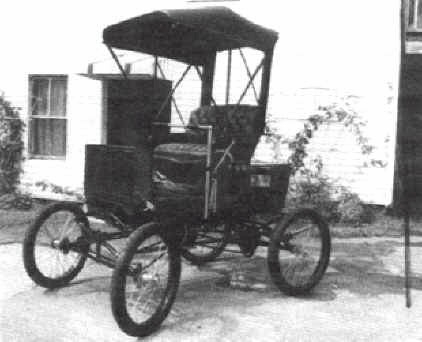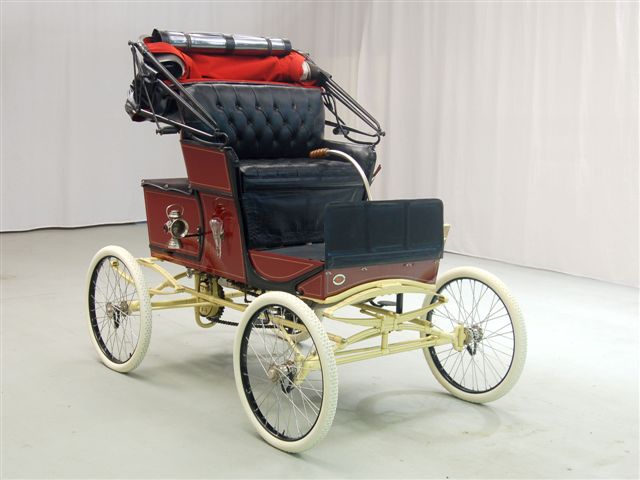The Marlboro was a typical New England steam car in appearance, although it used a 5 hp horizontal engine in place of the more usual vertical one. Final drive was by single chain, and four-passenger bodies were available, in addition to the standard two-passenger buggy.[1]
The firm was incorporated in 1899, with Orrin P. Walker, of Marlboro, as president, Ambrose M. Page, of Marlboro, treasurer, and Frank A. Power, mechanical superintendent.
The carriage was initially called the "Walker," in honor of the president of the company, but it soon changed to Marlboro.
In early 1900, The Marlboro Automobile & Carriage Company completed its first steam carriage. It ran on gasoline and featured seating for two or four passengers. It weighed 900 lbs. riding on 30-in. wire wheels with 1½" pneumatic tires.[2]
The Marlboro used a Mason twin cylinder five horse power engine and could travel up to thirty miles per hour. The initial price was from $700 to $1000. The body was made by Currier, Cameron, and Co. of Amesbury.
Some thirty cars were sold during the first year, and based on these initial sales, Walker grew over-confident and over-ordered for the next season and ceased production.
Shareholders were were angry, so Walker "did a little flim-flaming and sold the company to his dummy company, Videx Automobile and Carriage Company. No Videx cars were ever made and it closed down in 1903."[3]
This 1899 Marlboro Steam Stanhope was off for sale in April 2010 by Hyman Ltd. Classic Cars. Photos and information courtesy of Hyman Limited Classic Cars, 2310 Chaffee, St. Louis, MO 63146
Not surprisingly, the Marlboro Steam Stanhope looks a lot like a Stanley or Locomobile of the period. Built in the more remote suburbs of Boston, Orrin Walker could not have been unaware of the Stanley brothers or their successful steam cars. He turned to William B. Mason in Dorchester (a less-remote Boston suburb) -- who had built his own steam car in 1898 to demonstrate the superior performance of his pressure regulating valve, successful enough that the company he founded is still in the pressure-regulating business today, quite possibly on the heating system in your house -- to supply the Marlboro's engine as Mason also did for Stanley and Locomobile.
The chassis employed full elliptical springs located by perch rods in common with the other buggy-based steam cars chugging around New England at the time. Lightweight and endowed with impressive torque, steam was a realistic challenger to gasoline and electrics in the fading days of the nineteenth century but eventually lost out.
This 1899 Marlboro Steam Stanhope was restored to AACA National First Prize condition in 1975. Fitted with white rubber tires on wire spoke bicycle-style wheels, it seats two, up high and proudly in its early Stanhope coachwork. Its information file includes a copy of the original instruction manual. Prior owners in California are known back nearly two decades and it has a recent service in 2009.
Steam is one of the fastest growing collecting categories and few steam cars offer the quality, rarity and history of this 1899 Marlboro which is ready to used and enjoyed.


